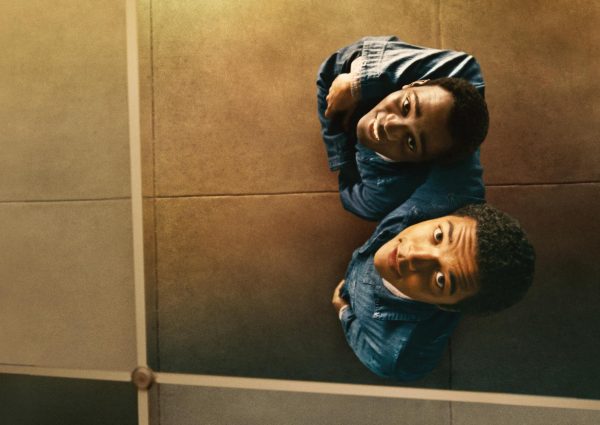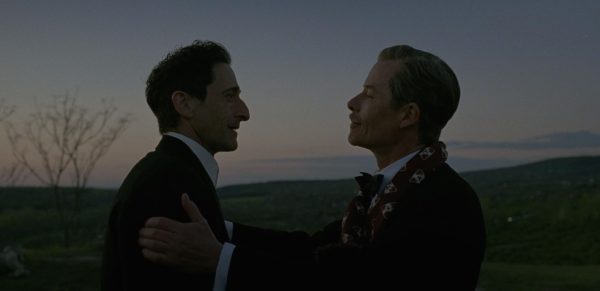Overwatch 2: Sophomore Slump or Sophisticated Second Coming?
I was in seventh grade, standing outside my middle school, waiting for the after-school bus to take me home on a boring Wednesday in March when I heard about this new game that was coming out. As I was standing there, a friend of mine chimed in on this new video game he had pre-ordered, and I decided to amuse him by asking him about it. He then told me about Overwatch. Little did I know that for the next five years, my life would be consumed after playing the game at his house and buying it for my 13th birthday.
Over the span of Overwatch’s six-year life cycle, I saw hero after hero get released, earning achievement after achievement. From a little shooter game whose cartoon graphics could easily pull in a lot of people came replica games, fan creations, and an entire esports league. Famous streamers began to pop up on my radar, like SaltyPhish, Seagull, Sleepy, and Super. I played every event, I grinded to level 461, and then I stopped playing. A toxic community, lack of real interest after four years of playing every day, and a busier schedule led to me playing the game less and less, and that eventually turned to not at all.
Then, the spark was revitalized in the form of Overwatch 2. The game’s sequel was first teased back in 2019, three years after its initial release, and was met overall with praise from the game’s community. Diehards for the game patiently waited for its release. In the almost three years it took for the game to be released, we learned it would be free-to-play, likely a strategy Blizzard developed after seeing the success of battle royale games like Fortnite and Apex Legends. The game also uses a battle pass system now, another idea inspired by these other games. Fans were also told of new maps in countries like Brazil, Monaco, Canada, Portugal, and Italy, as well as a map set in New York City. Blizzard also revealed three new heroes that were added to the game at launch: Sojourn, who is an original member of the Overwatch team; Junker Queen, who rules the Junker Town map in Australia; and Kiriko, the fox-spirit protected warrior of Kanezaka, Japan.
When the game first released world-wide on Oct. 4, I was ecstatic to jump back into it, before being disappointed at the astronomic 20 thousand player queue the game’s server placed me in. Two weeks later when I was finally able to play the game, I felt the same joy I did when I played the first Overwatch; I felt the excitement at new places and new characters, and I began playing right at the beginning of the Halloween event, which happens every October, so I was also excited to finally earn the new skins. However, I soon found out that’s no longer how it works and was somewhat disappointed. In the years that the game was in development, the idea of loot boxes, where you can randomly earn the items, cosmetics, or voice lines you want, were phased out and replaced with a battle pass and an in-game store.
The idea of loot boxes became controversial in the wake of Overwatch’s release, as many saw it as gambling. Loot boxes were eventually cracked down on, with Belgium and the Netherlands even banning them under new gambling laws. Overwatch 2 now has a store where you can buy the cosmetics seldomly on their own, but primarily in bundles, such as the Witch Kiriko bundle for the Halloween event. This bundle was available for 1900 coins, or what amounts to around $20.
Online opinion seems to be that most people who transitioned from the first game disagree with this style of change, as when you transfer your original Overwatch account over to Overwatch 2, your Overwatch 1 credits are transformed into “legacy credits” and can’t be used to purchase certain skins or sprays. In the first game, if you had the credits, you could simply buy whatever you wanted, from the 3,000 credit new skins to the 75 credit new voice lines. Now, you need to hope that the skin you want is in the store and be ready to pay real money to buy it, an admittedly understandable practice considering the game’s free-to-play style. However, this complaint is only from the viewpoint of someone who played the first game, and I’m not saying the game is now “pay-to-win,” as this doesn’t do anything in terms of helping people win games.
The game’s new maps offer a luscious new atmosphere for players to earn play of the game in, and the three new characters are all excellent options for those who enjoy both casual and competitive play, but the way transactions work can come off as rather weird to players of the first game, like myself. These new maps come alongside updates to the already existing maps, some of which were not in the map-selection for this season of Overwatch 2. Graphic upgrades and slight changes add a new level of mystery to some maps, and the new game-mode “push” is a fun and interesting take on the idea of the pre-existing “escort” mode.
In a game with push, it’s you and your teammates’ job to guide a robot deeper into enemy territory with a wall-like structure, dodging and avoiding enemy detection and subsequent fighting. This is a compromise made to justify the removal of a very controversial and disliked game-mode from the original Overwatch, “2 control point,” where you had to take two different sections of the map to win.
These graphic overhauls didn’t only come to the maps, as all of the 32 heroes returning from the original game had their costumes, hair-styles, and other cosmetics changed to make them look older, wiser and not the same from Overwatch 1, but you can keep the original Overwatch skins if you transfer over your account from the first game.
Another aspect of the game that’s rather enjoyable is how the battle pass system works. When I first saw the idea of battle passes, I felt like it was giving those with disposable income an unfair advantage, however when I spoke to someone who plays Overwatch more competitively than me, I saw a new light to it. He said he wasn’t buying the premium battle pass, which gives you more items, until he finishes all 80 levels, which amounts to 800,000 xp. I then saw the battle pass as just a new version of the level system, which they removed. I also can now laugh at it and find some humor, as it can just be a way of knowing who cares more about how their character looks than how they play.
Personally I enjoy the new ways of play that are here with the 5 vs. 5 play style, as opposed to the 6 vs. 6 play type with the first game, which allows for more creative use of tanks with crowd control ultimate abilities. It also allows for more creative play-styles, as teams no longer have two “tank” characters to soak up the damage like sponges, resulting in less defensive capabilities for both teams. This can lead to new “metas” where certain heroes are chosen and others are avoided like the plague.
The game has now been out for around a month, and the reception has overall been positive, and with the new hero Rammattra on the way with season 2 of the battle pass, it appears that the Overwatch Community is going to be given more with this new era of Overwatch than we were in the six years that the first game was around.






